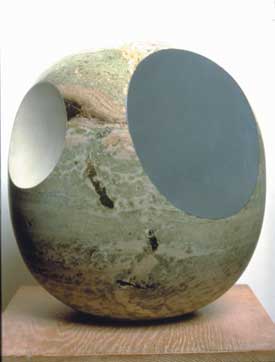

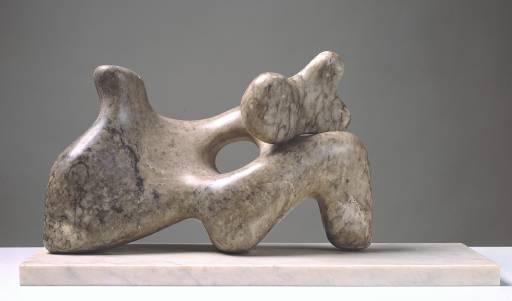

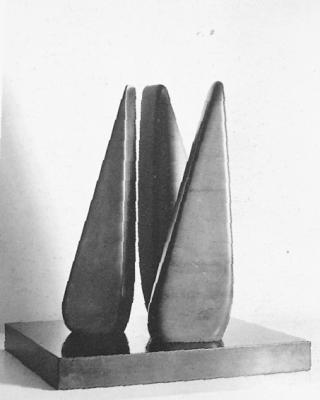
Some Sculptures featured in the Centenary Exhibition
My Reaction
My experience of her sculpture came after watching the Imagine documentary (BBC 2003) on her personal life, in relation to her sculpture. I watched it as I have an interest in modern sculpture; my imagination was instantly caught by the links she made between the environment and sculpture. I further researched her work by reading A.M. Hammacher's book on her works, which it is very comprehensive (I read it with the aid of a dictionary and I think that reading it has enlarged my art- speak vocabulary) The reading of the book was followed by a visit to St Ives, in order to view the Centenary exhibition at the Tate and visit her studios/museum.
The Tate gallery, with its modern annex in St Ives is probably one of her legacies to the people of Cornwall (apart from her Museum). As if it wasn't for her involvement and donations to the Tate, it may would not have been established there.





Some Sculptures featured in the Centenary Exhibition
The Exhibition / Retrospective at the (in my opinion) pokey Tate St Ives. It consisted of a range of works, illustrating her lifetime achievements; from her Early Torso carvings of the 1930's, her maternity themed forms, early constructivist sculptures, her later experiments with coloured stones (they named this part magic stones, the aforementioned Constellation 1973 would fit into this group), a group of the scented gaurea carvings, and her concourse sculptural groups with the NHS sketches.
The hot stuffy busy atmosphere of the Gallery was contrasted by a visit to her studio and garden. Although her home was partly damaged by the fire (and restored into a space for indoor sculptures), the garden and studios have been left almost as they were when she died. There is a warm and comfortable feeling to the small, densely packed garden. It is almost as if you as a visitor are visiting the studios whilst she is away. In the studios, amongst tools and materials, are a small number of unfinished sculptures. There are no restrictions to touching the sculptures when you are in the garden - which adds to the intimate, friendly atmosphere.
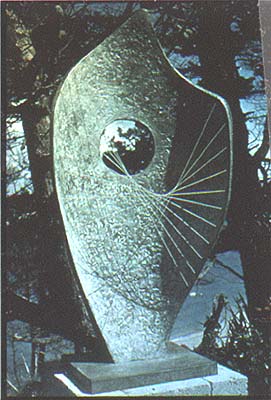
Curved Form (Bryher II), 1961 BH305
The visit to the garden was followed in the proceeding weeks of the summer holiday, by a holiday to the Isles of Scilly - a small group of islands of the Cornish coast. I have read that Hepworth visited the islands throughout her life, as did many other Cornwall based artists, and used her experience of the landscape there as an impetus for sculpture (she probably had a love hate relationship with them although she named a number of sculptures after places on the islands, but broke her hip when visiting them in 1967). I especially enjoyed the boat rides between the islands seeing the contrast between the golden beaches, out crops of rocks and imposing granite cliffs. The appearance of the beaches and landscape is similar to that of the marine environment around St Ives. One can see how the marine landscape of the Scilly's and West Penwith influenced Hepworth's work .
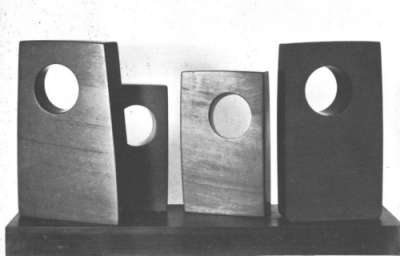
Four Rectangles Four Oblique Circles, 1966 BH424
Whilst living on the islands one becomes aware of the dynamics of the weather. When it is good weather; half hourly flights and daily ferries crossings connect the communities of the islands to the mainland. When the weather is bad you just have to wait for things to happen - the shops can stay empty if the boat is late arriving. You as the visitor, or as Hepworth described it the figure in the landscape have a relationship with the sea, sun, moon, and tide. Whilst I was there I noticed how the rock forms reminded me of Hepworth's later sculptures, which consisted of stacked forms, such as Six forms (2 X 3) 1968, Vertical Forms Offering 1967, Four Rectangles Four Oblique Circles, 1966 above, and Sea Forms 1972.
---
My study of her work has led me to admire her achievement. Although the conduct of her personal life is often criticised I think her willingness to make her sculpture the centre of her life. This choice by an artist is what we should look for when questioning the integrity of any new artists work. Every work by Hepworth appears full and finished because of this.